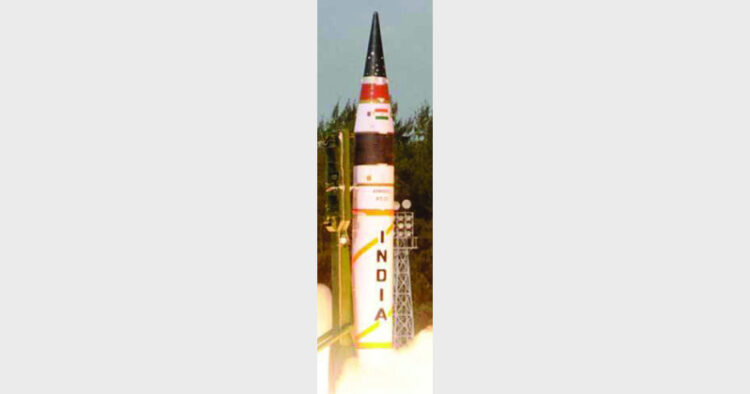Radhakrishna Rao
 After laying the foundation stone of Indian National Defence University at Binola near Gurgaon in May this year, Prime Minister Manmohan Singh described outer space and cyber space as the two emerging security challenges for India. As our dependence on the cyber and outer space domains grows, new sets of challenges will emerge which can also assume military dimensions,” noted Singh. While the havocs caused by cyber intrusion have become a widely evident phenomenon, the slow emergence of outer space as the battlefield of the future continues to remain an esoteric topic of academic and strategic discussion.
After laying the foundation stone of Indian National Defence University at Binola near Gurgaon in May this year, Prime Minister Manmohan Singh described outer space and cyber space as the two emerging security challenges for India. As our dependence on the cyber and outer space domains grows, new sets of challenges will emerge which can also assume military dimensions,” noted Singh. While the havocs caused by cyber intrusion have become a widely evident phenomenon, the slow emergence of outer space as the battlefield of the future continues to remain an esoteric topic of academic and strategic discussion.
Of course, Indian Defence establishment’s 15 years “Technology Perspective Roadmap” speaks of the need for the country to prepare for the space war with a focus on the development of anti-satellite weapons “for electronic or physical destruction of satellites in various orbits”.
In the aftermath of China’s stunning anti-satellite test carried out in early 2007, there has been a growing clamour in India to build up space war capability and ensure the security of Indian space assets. Beijing, which has set a scorching pace in the development of advanced anti-satellite capability with the “direct ascent missile,” is known to be preparing for its second anti-satellite test. Taking a cue from the US and erstwhile Soviet Union, China is also into the development of laser based weapons for deployment in outer space as an anti-satellite device. In the aftermath of Chinese anti-satellite test, Defence Minister AK Antony had expressed his concern over the “emergence of anti-satellite weapons, a new class of heavy lift off boosters and improved array of military space devices in our neighbourhood”. Of course, China as part of its long term strategic vision, is quite keen to challenge US advances in the developing space based on defensive and offensive capabilities.
Not long back sources in Defence Research and Development Organisation (DRDO) had pointed out that by marrying the propulsion system developed for India’s long range Agni-V missile with the kill vehicle developed for the Indian Ballistic Missile Defence(BMD) shield, it would be possible to develop an anti-satellite device. As observed by VK Saraswat, the DRDO chief, by combining the boost capability of Agni-V with the kill vehicle with an advanced seeker, it will be possible to zero in on into the targeted satellite. However, he was quick to point out that “India does not believe in space weaponisation. We are only talking about having the capability”.
Interestingly, another spin off from Agni-V is that it can be modified to work as a space vehicle to orbit light weight satellites which are critical to supporting military operations if an adversary attacks the frontline spacecraft constellation of the country. ”The mini satellites can provide communications, navigation and some sort of GPS to the armed forces for a limited period of time” observed Saraswat. DRDO has also revealed that the building blocks of an anti-satellite system are being put in place. Saraswat has also revealed that laser based space sensors and Exo-Atmospheric Kill Vehicle (EKV) that DRDO is planning to develop in the years ahead would be of help in monitoring and tracking space based killer devices.
India, which is officially committed to keep the outer space as a zone of peace, cannot afford to turn a blind eye towards the on-going global efforts in terms of weaponising outer space. Of course, the Indian Space Research Organisation(ISRO), being a civilian space agency committed to the peaceful exploitation of outer space, cannot openly associate itself with country’s space weaponisation programme, which the ruling dispensation in New Delhi cannot afford to ignore.
By imaginatively exploiting a range of technologies developed by both DRDO and ISRO, it would not be difficult for India to build up space based defensive and offensive capabilities. There is no denying the fact that outcome of a futuristic battle being fought on the ground would be determined by the “superiority established in outer space”. Indeed, with the outer space set to become the fourth dimension of the ancient art of warfare, the chilling prospects of “star wars” projected in Buck Roger’s comic strips seems to be edging closer to the reality.
Incidentally, the possibility of outer space becoming a new theatre of warfare became evident after the former Soviet Union initiated experiments on the killer satellite systems in the late 1960s.













Comments